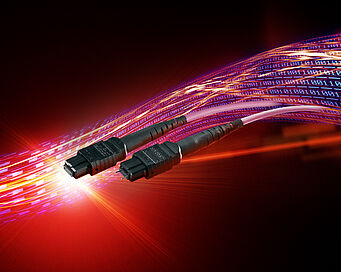Do we have to expect a further development of parallelisation in the data center in the future?
It is said that Leonardo da Vinci had the knowledge of his time in mind. He could retrieve it at any time. But with today's flood of knowledge, the Renaissance genius would probably also be overwhelmed. After all, the volume of data and information is growing faster than ever before. And there is no end in sight to this development. This pushes many data centers to their limits. Infrastructure and cabling are weakening, especially as they are not always state-of-the-art. In order to increase data throughput and make information available in real time, Rosenberger OSI believes that parallel optics applications and future-oriented Ethernet cabling with multimode fiber (MMF) are the ideal solution. In this way, enormous amounts of data can be exchanged between the end devices connected via a data center - quickly, securely and reliably.
Experience has created a healthy basis
But Ethernet over MMF is by no means a white rabbit that the developers conjured out of their hat overnight. Rather, the development of this technology began as early as the mid-1990s and has continued step by step ever since. As a result, data centers are offered a healthy technological basis that has benefited from decades of competent development work.
The IEEE 802.3 Ethernet Working Group is currently working in parallel on several new Ethernet versions. In addition to the next speeds 200GBASE-SR4 and 400GBASE-SR16, 100GBASE-SR2 and the third 100G version are also on the committee's table. Even lower intermediate speeds with 25GBASE-SR and 50GBASE-SR are not yet obsolete. The aim of the standardisation projects is to define the transmission over at least 100 meters of MMF. In this case the gradient index 50/125µm OM4 fiber is meant. The shorter lengths possible via OM3 are also specified. This is to check whether existing OM3 cabling can still be used.
Today, the vast majority of parallel optical applications in data centers are based on multimode protocols running on either OM3 or OM4 fibers. With the introduction of 100 GBE-SR4, only four channels are required by parallelizing 25 GBE native connections. This makes the 12-fiber MPO connector as an interface a proven solution in this environment.





